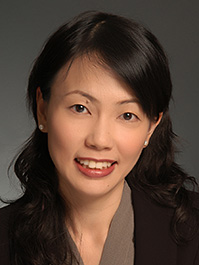I am a 50-year-old woman and my eyelids kept twitching recently. Although it does not affect my daily activities, I am worried that it may be a sign of neurological conditions like Parkinson’s disease. What can I do about it?

Eyelid twitching occurs because of intermittent bursts of electrical activity in the nerves that control your eyelid muscles. To accurately diagnose your condition, it is important to note if it is unilateral or bilateral, and if it involves the face as well.
The most common form of eyelid twitching is eyelid myokymia. It typically affects only the lower or upper eyelid on one side, and is usually caused by fatigue, eye strain, stress, overconsumption of caffeine, and local irritative factors such as dry eyes or excessively oily eyelids (meibomitis and blepharitis). This can last for several days or weeks but is almost always benign, and usually resolves spontaneously or with conservative measures like using eye lubricants or cleaning your eyelids.
Some people may experience hemifacial spasm, in which there is intermittent, involuntary contraction of the muscles of half the face (the eye closes as if it is winking and the same half of the mouth is drawn upwards). This is due to compression of the facial nerve responsible for activating the facial muscles on the same side by a normal pulsating blood vessel in close proximity that has enlarged with age.
In benign essential blepharospasm (BEB), the patient experiences intermittent involuntary spasm and closure of both eyes. It may start with increased frequency in blinking in response to bright light, wind or stress. Then, the patient may find himself or herself closing his or her eyes uncontrollably. Sometimes, the spasm also involves other muscles of the lower face and neck, causing involuntary lip pursing and chewing movements. This is termed as Meige Syndrome. There is usually no underlying cause for this.
Patients with Parkinson’s disease may have blepharospasm, but the incidence is low and is reported to be between 0.9% and 3%. Blepharospasm very rarely precedes Parkinson’s disease.
When should I see a doctor?
If the twitching involves half of your face or both eyes simultaneously and is persistent, it is advisable to seek medical attention.
Treatments for twitching
For common eyelid myokymia, lifestyle adjustments such as getting adequate sleep, taking eye breaks from computer work, reducing caffeine intake, applying lubricating eye drops, and performing lid hygiene may help. For lid hygiene, you may use over-the-counter lid cleansers or baby shampoo diluted with warm water, together with a cotton bud or pad, to gently wipe your eyelid margin near the root of the lashes in a horizontal direction twice a day.
Both BEB and hemifacial spasm do not resolve on their own and require medical intervention. For hemifacial spasm, magnetic resonance imaging (MRI) is recommended to exclude a compression of the facial nerve on the same side. If a blood vessel is found to be compressing on the facial nerve, neurosurgery can assist to move the offending vessel away from the facial nerve.
For both hemifacial spasm and BEB, Botulinum toxin (Botox) may be injected into the eyelids and facial muscles to relieve the spasms. Repetitive injections are required as the effect will wear off after four to six months.

Dr Loo Jing Liang
Head and Senior Consultant
Neuro-Ophthalmology Department, SNEC
Click
here to check out other articles in
SINGVISION Issue 1/2021. 